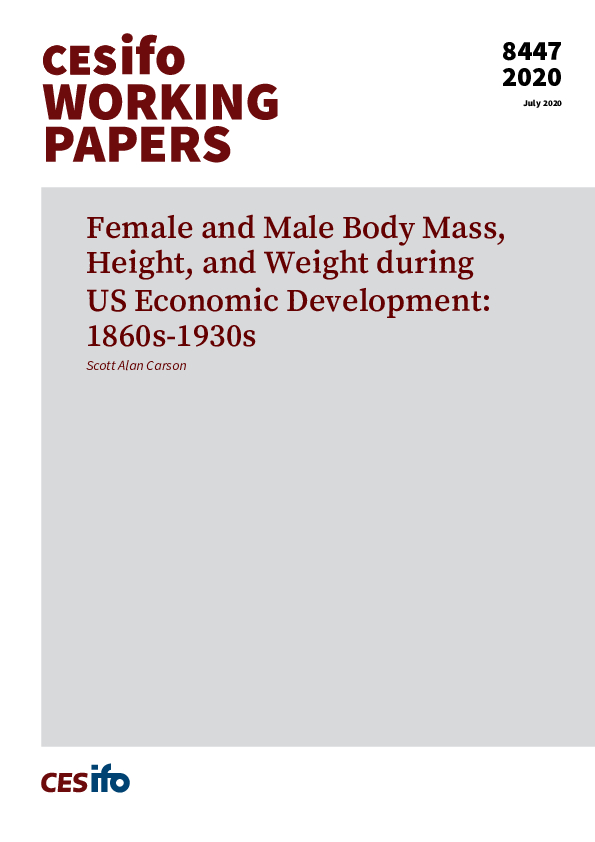Female and Male Body Mass, Height, and Weight during US Economic Development: 1860s-1930s
CESifo, Munich, 2020
CESifo Working Paper No. 8447

When other measures for economic welfare are scarce or unreliable, the use of biological measures are now standard in economics. This study uses late 19th and early 20th century BMI, statures, and weight to assess how net nutrition accumulated to women and men during US economic development. Throughout the late 19th and early 20th centuries, female and male BMIs, statures, and weight remained constant over time. Unskilled laborers’ BMIs were higher, their statures were taller, and their weights heavier than workers in other occupations. Women and men from the Northeast and Middle Atlantic had higher BMIs and shorter statures, while their counterparts from the South were taller and had lower BMIs, indicating that it was superior Southern cumulative net nutrition associated with lower BMIs.
Social Protection
Labour Markets